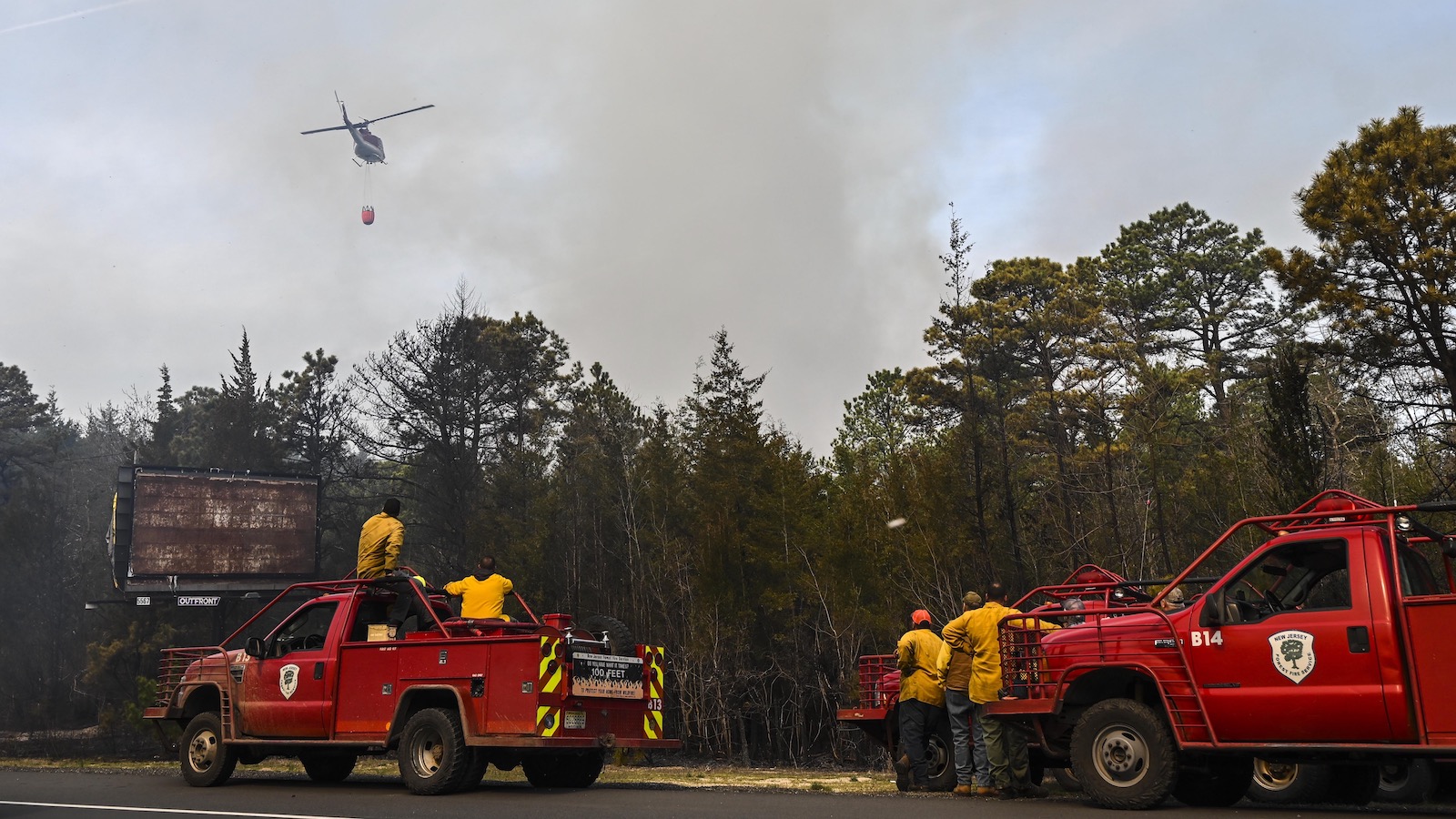Spring fire season is a regular occurrence in the eastern U.S. It’s not nearly as dramatic as what’s seen across the West, mostly due to the region’s increased rainfall and high humidity, but it can cause serious damage. Wildfires have scorched 351,821 acres so far this year, and firefighters throughout the mid-Atlantic and South remain on alert, with “red flag” warnings and burn bans across multiple states.
Things got off to a roaring start in southern New Jersey, where firefighters have battled 160 wildfires, four of which were major. The largest of them tore a streak across the rural Pine Barrens region and saw 200-foot walls of flames earlier this month; it burned nearly 4,000 acres, driven by record heat that included nighttime temperatures rarely dropping below the 60s. As in the West, warming conditions driven by climate change are leading to longer fire seasons that begin earlier in the year.
“We’re seeing this peak fire season that was confined to about a two-to-three month period extending into a four-to-five month period,” Greg McLaughlin, administrator and chief of the New Jersey Forest Fire Service, told WHYY News. Fire season in the Garden State typically runs from March through May, but these days it’s been starting in February and heading into late June and early July, he said.
Unusually warm temperatures, low humidity, and gusting winds drove the fires that burned thousands of acres in Pendleton County, West Virginia, and in Daniel Boone National Forest in south-central Kentucky last week.
In coastal North Carolina, 245 federal and state firefighters continue battling a blaze that has blackened 36,000 acres in Croatan National Forest. The conflagration started last Wednesday evening, and crews have contained just 15 percent of it. The immense amount of smoke has led to air quality warnings in 21 nearby counties, encouraging residents to stay inside and limit outdoor exercise. While the Croatan is adapted to fire, which is a normal part of the ecosystem, officials say the current blaze is unusually large — the second worst in the forest’s history.
”This is larger than normal,” said James Wettstaed, a U.S. Forest Service public information officer currently stationed in North Carolina.
Though the fires haven’t taken any lives or burned a large number of structures, exposure to all that smoke carries health risks. A 2022 Stanford University study found that it increases the incidence of preterm births, for example. Researchers at University of California, Davis were funded this year for further research into the health risks of wildfire smoke, particularly as fires burn closer to populated areas. Wildfire risk to human health also increases as communities increasingly encroach on wildland, a major issue in the densely settled mid-Atlantic.
Although there is widespread consensus that the warmer, drier conditions created by climate change contribute to more frequent, and more intense, wildfires, regional foresters and firefighters say they can’t be sure a specific fire is the result of climate change. From the ground, it’s difficult to have a bird’s-eye view.
For her part, Nancy Ellsworth, center manager for the Southeast Interagency Fire Center, feels the wildfire season isn’t out of the ordinary. “Normally this is the last month of fire season,” she said, expressing hope that late spring rains would dampen the flames.
But the agency’s spring outlook assessed a higher-than-usual wildfire risk across the Southeast. “Meteorological winter was nothing short of special across the South, with many reporting stations experiencing a top-five warmest winter,” the agency reported. “Wintertime high temperature records have been set in nearly every state.”
Extreme temperature fluctuations increased the risk of fuel accumulation, with an abrupt cold snap around Christmas leading to an increase in highly flammable dead leaf litter. Florida had the worst drought projections, but it appears that recent heavy rains drenched the state instead. A combination of long-term drought and heavy rains may have in fact worsened the recent Fort Lauderdale floods.
The agency’s eastern fire center also assessed increased fire risk, particularly within the coastal mid-Atlantic. Drought conditions have increased across the U.S., even in the normally wet, leafy climes of the U.S. mid-Atlantic and Southeast. According to the U.S. Drought Monitor, the area saw abnormally dry conditions in the first quarter of 2023. Next year’s global switch from La Niña to El Niño conditions also brings uncertainty, with projected warmer, drier conditions across the East.
Wettstaed hopes for the rains, too. But nothing’s certain until it comes, and until then, fire season goes on. “If we don’t get the rains, that’s another matter,” he said.



